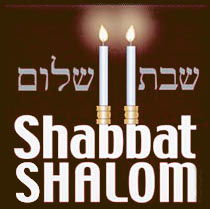Kislev
Kislev is the ninth month in the Hebrew calander, as it is the ninth month after Nissan (month which Pesach is featured).
The first rainbow, observed after the Flood, was seen in the month Kislev. The rainbow is a covenant that Hashem would not bring another flood upon earth again. Which was featured in parshat Noach (Bereishit 9:8-17).
Rosh Chodesh Kislev, which refers to the transition day or days between months, consists at times of one day, and at times of two. This is the month after Cheshvan and sometimes consists of 29 days, and sometimes of 30 days.
From the days of the Hasmoneans, as long as the Beit Din, also known as the Sanhedrin, or Jewish Supreme Court, sanctified the month through the validity of witnesses, who testified as to when they actually saw the New Moon, where in the sky they had seen the New Moon, and precisely what it looked like, messengers of the Beit Din went out to places distant from Jerusalem, to make it established when the brand new month had been sanctified.
The Beit Din needed to do this only during months in which festivals occurred, so that people knew on which day to observe the festival. Therefore, when the month of Kislev was sanctified, messengers had been sent out, so that people living from a large distance from Jerusalem would know when Chanukah was to begin (25th of Kislev).
Chanukah is not actually directly mentioned in the Torah; however it is a festival of Rabbinic origin and took place over 165 years before Common Era. In fact the Menorah is hinted to in many places in the Torah including the readings of Terumah (Shemot 23:31) and Behaalotacha (Bamidbar 8:1-4). We are also hinted to the Greece Exile in Parshat Vayetze, when Yaakov dreamt of the ladder (Bereishit 28:12) in which the angels were walking up, 130 steps, symbolizing the Greek Exile of 130 years, which was one of much religious persecution, where Antiochus tried to assimilate the Jews very much into Greek culture and make them lose their identity as Jews (Netivot Shalom), they tried to desecrate and destroy the Second temple, however the burning of the light for eight days signified that the Jews were very much spiritually and physically still alive and Hashem’s presence was still residing among them.
The question was posed by many about why we keep eight days of Chanukah as opposed to seven days because the candle only miraculously burned seven extra days as the first day was already expected to burn by the laws of ‘nature.’ This is to teach us that everything on this earth is of miraculous nature and one should try and realise that in all tasks and aspects that one may be doing throughout the day. The Jews are always beyond ‘nature!’
The month of Kislev is well known for the day in which the Mishkan (Tabernacle) was completed, interestingly enough it was also completed on the 25th of Kislev.
Also in this month, Ezra, head of the Sanhedrin and the leader of the Jewish people at the time of the construction of the Second Temple, made an address to a three day assemblage of Jews in Jerusalem, telling them to keep to the teachings of the Torah and to eradicate their interfaith marriages (this was from assimilation due to their 70-year exile in the land of Babylon). This occured on the 20th of Kislev.
The 27th Kislev was a good day in that the Flood had finished after 40 days and 40 nights in the Hebrew Year 1656.

 Share on Twitter
Share on Twitter Visit our Facebook page
Visit our Facebook page